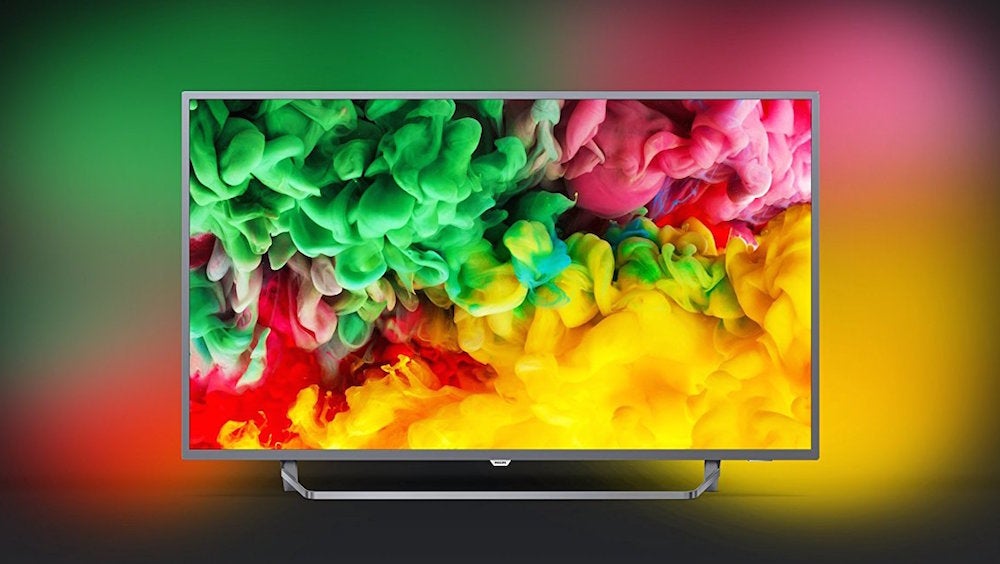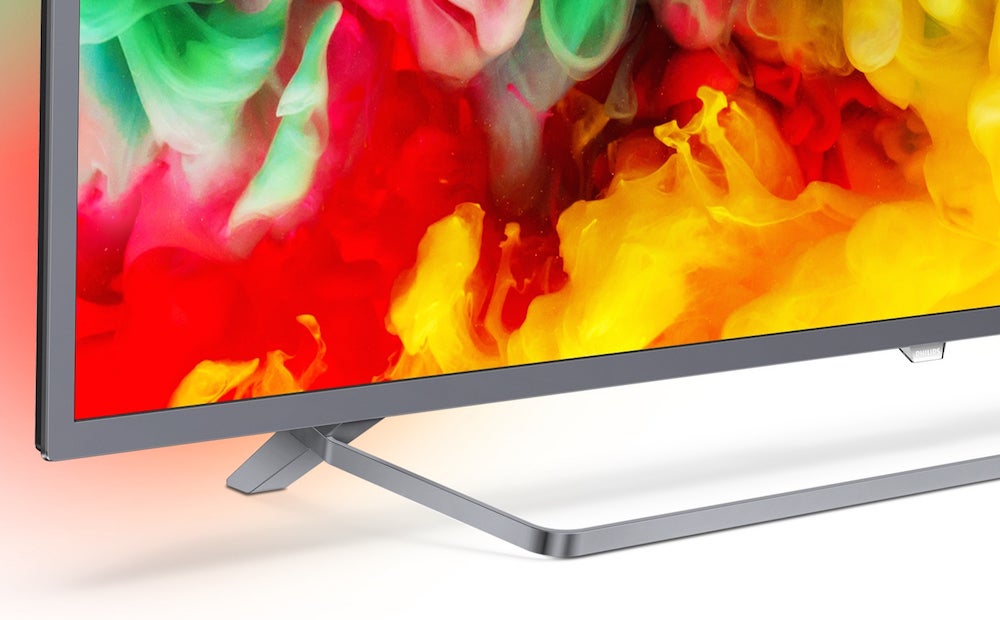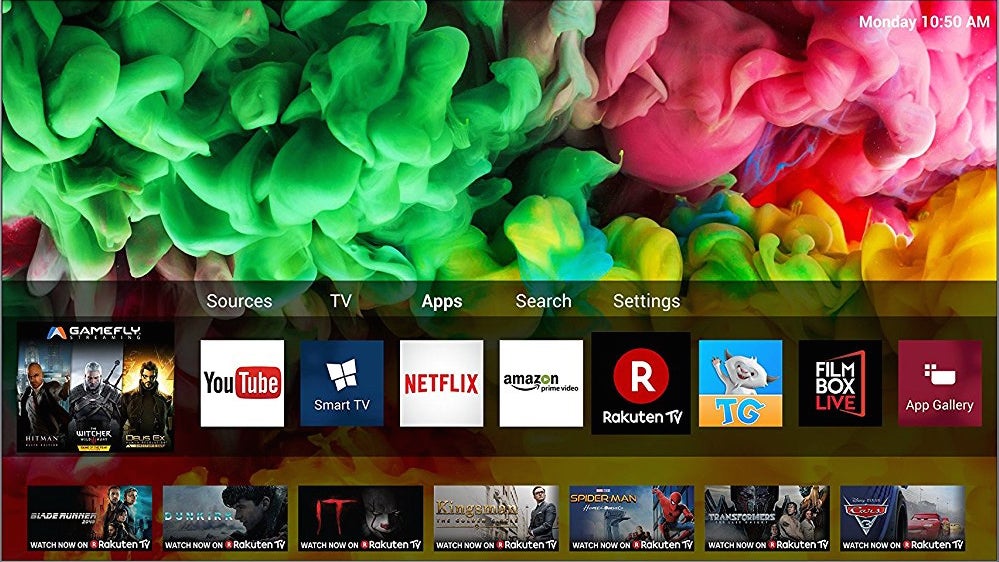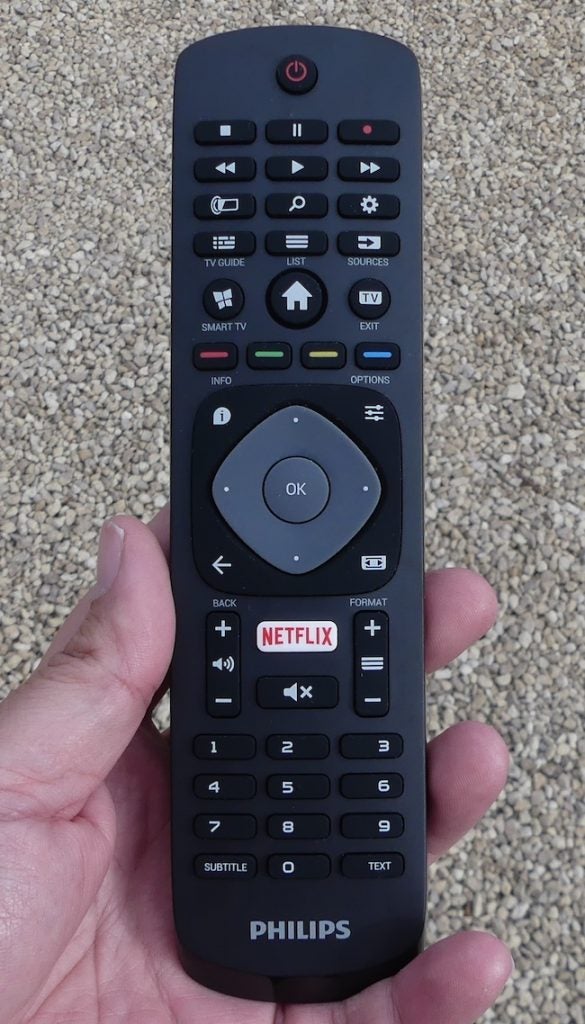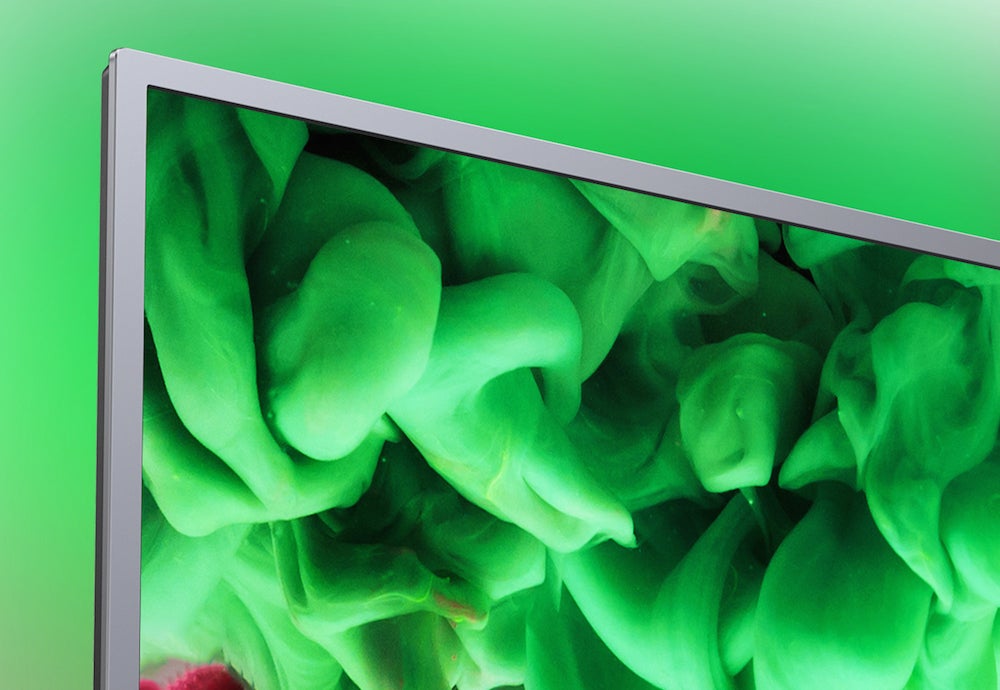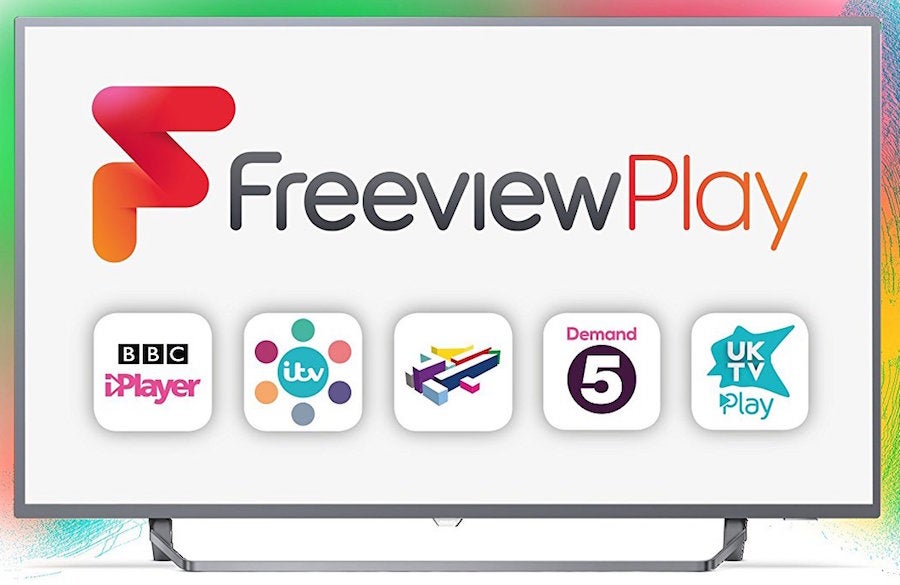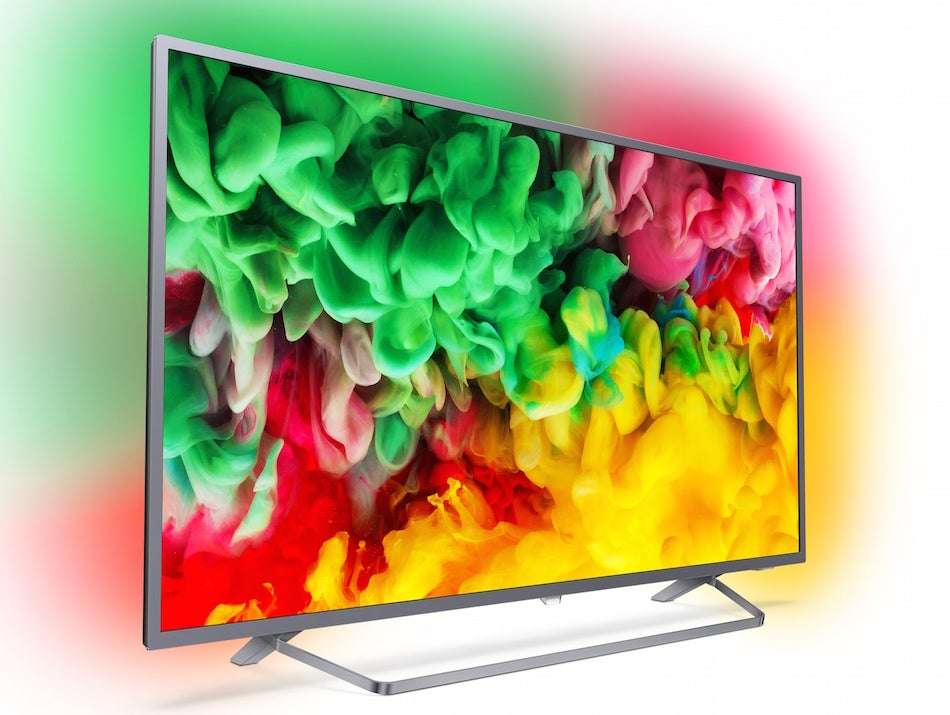Philips 55PUS6753/12 review: One of the best value 4K TVs we’ve seen all year
Philips 55PUS6753/12 review: One of the best value 4K TVs we’ve seen all year Review
Outstanding value for money
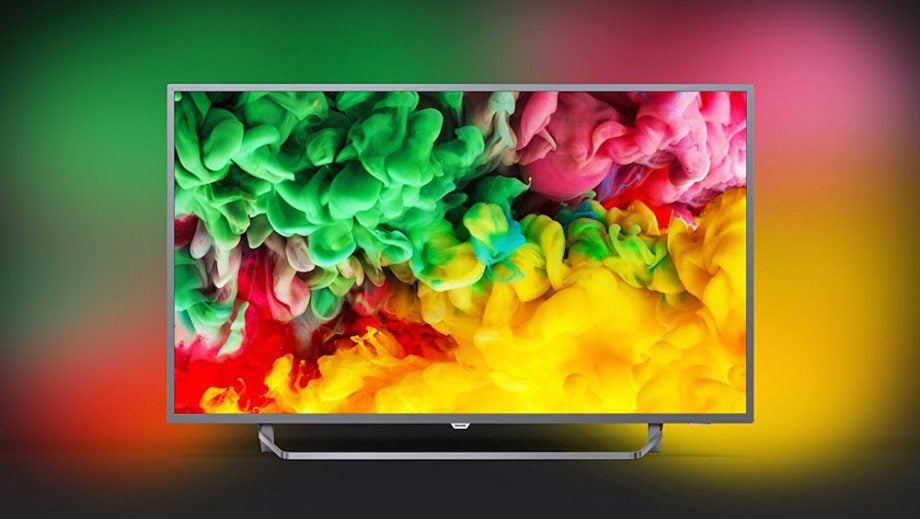
Verdict
Pros
- Crisp, clean 4K pictures
- Good black levels for its price
- Great value
Cons
- It's not very bright
- Rather tortuous set up menus
- Bass-light sound
Key Specifications
- Review Price: £700
- 55-inch LCD TV with direct LED lighting
- Native 4K resolution
- HLG and HDR10 HDR support
- Pixel Precise Ultra HD video processing system
- SAPHI smart TV system
What is the Philips 55PUS6753/12?
The Philips 55PUS6753/12 is the first 2018 Philips TV to arrive on our test benches. And with a price of just £700 for a 55-inch 4K HDR TV, it has the potential to be quite the bargain.
Not surprisingly, that price does come with one or two strings attached. You get Philips’ Pixel Precise Ultra HD video-processing system rather than the brand’s more powerful P5 system. Also, unlike more expensive Philips TVs, the 55PUS6753 doesn’t carry Android TV.
However, despite its affordability it uses a VA-type panel, lit by direct LED lighting. This immediately makes it far more interesting than Philips’ 2017 budget sets, which predominantly used low-contrast IPS panels.
Related: Amazon Prime Day 2019
Philips 55PUS6753/12 – Design
Compared with the glamour of Philips’ high-end TVs, the 55PUS6753 looks pretty straightforward. Its grey frame is too plasticky to carry off the metallic look for which it strives. Its open bar stand, while impressively minimalist, is pretty flimsy, and general build quality is uninspiring. Its frame, too, is a touch wider than those wrapped around more expensive sets.
But the point, of course, is that this isn’t a ‘more expensive set’. It’s made to hit an aggressive price. And actually, by such affordable 4K TV standards, it’s anything but a victim of the ugly stick. Especially since it has a glamorous ace up its sleeve in the shape of Philips’ Ambilight technology.
This uses LEDs on the TV’s rear to cast coloured lights out from the screen’s left, right and top edges. The light can be set to a colour of your choice, or track the colour content of the picture you’re watching. You can adjust the lights’ brightness and speed response, too.
Related: Best TV Deals
A description of Ambilight always makes it sound rather gimmicky. In reality, however, it’s both fun and can genuinely help you feel more immersed in what you’re watching. There is a slight issue with it in the 55PUS6753’s case, though, which I’ll cover in the Performance section.
The remote control provided with the 55PUS6753 is okay. It’s a single-sided affair, without the rear qwerty keyboard sported by more premium Philips handsets. It also tucks some of its more important buttons away in rather unhelpful places.
It’s a comfortable size, though, and its buttons are responsive and tactile. It’s nice to find a large Netflix button at its heart too.
Philips 55PUS6753/12 – Features
The 55PUS6753 doesn’t join more expensive Philips TVs in supporting Android TV. Instead, you get a new, proprietary Philips interface called SAPHI that sits atop a Linux-based OS.
For me, this is actually good news. I’m no fan of Android TV (even though Philips handles it better than anyone else), and SAPHI actually does a decent job of handling your app collection.
For starters, unlike Android’s full-screen interface, the SAPHI homescreen covers just half of the TV picture. It also seems to prioritise video-streaming apps right out of the box, and adding more apps is straightforward. The SAPHI menus runs slightly sluggishly, though, and things can get convoluted when you want to find the picture settings.
Related: Best budget TVs
These picture settings are truly formidable in their scope and complexity, though. While the 55PUS6753 doesn’t carry Philips’ top-of-the-line P5 processor, its Pixel Precise Ultra HD system is still way more powerful than anything usually found at the same sort of price.
There’s processing for motion, colour, sharpness, contrast, plus MPEG and standard noise reduction. You get a new multi-level HDR Plus engine, too, for boosting highlights, contrast and colour range. And every bit of this processing can be tweaked to suit your tastes or content.
However, while such flexibility is great on one level, using the TV can become quite complex if you venture beyond the core picture presets.
SAPHI offers a solid app collection. Most of the big-hitters are present including Netflix, Amazon Video, Rakuten, YouTube and Freeview Play. Note, though, that the Amazon app only supports 4K, not HDR, while the Rakuten app doesn’t support 4K or HDR. I couldn’t get YouTube to spin up to 4K playback either, but Philips assures me that this one should work.
The Freeview Play app provides access to the catch-up apps of the BBC, ITV, Channel 4 and Channel 5. You can access these apps individually, too, but Freeview Play brings everything together neatly and delivers an increasingly useful way of browsing shows you may have missed.
The 55PUS6753’s screen specifications are promising for a £700 55-inch TV. Using direct rather than edge LED lighting is a great start, since this approach almost always improves contrast.
Also a relief is the discovery that the 55PUS6753 uses a VA type of panel rather than an IPS one. This, again, is a key decision when it comes to contrast – especially HDR contrast.
The 55PUS6753 doesn’t apply any local dimming to its direct backlighting – which is fair enough for £700. It does sport Philips’ Micro Dimming system, however, which breaks the image down into 6400 zones for more accurate analysis. Micro Dimming Pro can also adapt the picture to suit the light levels in your room. This can be especially helpful with HDR sources.
Connections on the 55PUS6753 are solid rather than amazing. The main limitation is that while there are three HDMIs, only two support 4K up to 60Hz. HDMI 1 only has the capacity for 4K UHD up to 30Hz.
You also only get two USB ports rather than the three you tend to get with more expensive TVs. But that should be sufficient for most people. Plus, of course, you get hard-wired and wireless network connectivity. This feeds the TV’s smart features, and supports multimedia streaming from other compatible devices on your network.
Philips 55PUS6753/12 – Performance
In most ways that matter, the 55PUS6753’s picture is very impressive for £700. Particularly pleasing (especially after the contrast disaster of the Sony 55XF8505) is the Philips model’s black-level performance.
Dark scenes appear behind much less low-contrast greyness than you’d normally see with such an affordable TV. This makes them more natural and relaxing to watch, as you’re not peering through ‘fog’ to see what’s happening.
Unlike most similarly affordable TVs, the 55PUS6753’s black levels don’t take a heavy beating when shifting from SDR to HDR. Poor black levels can make HDR pictures less enjoyable to watch than SDR on many budget (and some not so budget!) TVs. But on the 55PUS6753, there’s no question that HDR delivers an enhanced viewing experience. Albeit within a quite pronounced limitations I’ll get to later.
The 55PUS6753’s ability to retain decent black levels while showing HDR also means it gives a better sense of HDR’s extra dynamism than most of its greyer rivals. After all, just increasing brightness without also retaining black-level depth doesn’t really deliver a wider dynamic range.
The 55PUS6753’s superior black levels also help it respond nicely to the wider colour gamuts associated with HDR content. Saturations and general vibrancy levels increase with HDR sources without looking overcooked or ‘rough’. In fact, thanks to the power of Philips’ processing, HDR colours look precise and clean. Skin tones, in particular, outgun those of far more expensive TVs in terms of both detail and naturalism.
The 55PUS6753’s precise colour also helps unlock the full fine detail majesty and sharpness of good quality 4K sources. Leave the Super Resolution feature on and you’re never in doubt that you’re getting a definitively 4K rather than HD performance.
What’s more, this emphatic 4K clarity stays impressively intact when there’s motion in the frame thanks to Philips’ motion processing. Follow my earlier motion processing advice and you’ll get relatively little blur, judder or smearing. And all without the flickering or haloing nasties associated with less powerful video processing.
While the 55PUS6753 excels relative to rivals with HDR images, it’s no slouch with SDR either. Contrast is excellent, with slightly more brightness than usual for a £700 55-inch 4K TV. Colours are well defined, subtly blended and perfectly balanced. If your SDR source is good-quality HD rather than 4K, the 55PUS6753 upscales it to 4K cleanly and crisply.
Wrapping up the 55PUS6753’s picture charms is its impressively low input lag: just 18ms when using its Game preset. Although this average does comes from figures that fluctuate between 10ms and as much as 50ms.
Unusually, the 55PUS6753 retains some noise-reduction processing in its Game mode default settings. But even more unexpectedly, turning this NR off manually doesn’t reduce the input lag figure.
The strengths covered so far already set the 55PUS6753’s pictures above most, if not all, of its direct peers. However, there are a few issues too.
The biggest of these is that the 55PUS6753 really isn’t bright enough to unlock anything like HDR’s full potential. I measured its maximum brightness on a 10% white HDR window at just 350 nits (using the Game and Personal picture presets). This drops to just 250 nits in the Movie HDR mode, and just 287 nits in the default Natural HDR preset.
To put this in context, LCD TVs are required to deliver a claimed 1000 nits to meet the so-called Ultra HD Premium standard. The recently tested Sony 55XF8505 managed to creep above 500 nits (although it was ultimately ruined by poor black levels). Samsung’s UE55MU7000, meanwhile, which is currently available for the same money as the 55PUS6753, hits 650 nits.
To be fair, the Sony 55XF8505’s problems show that brightness alone isn’t enough to do HDR well. But it’s undeniable that the 55PUS6753’s pictures only unlock a fraction of HDR’s colour volume and peak brightness potential. The lack of brightness can also cause a little crushing of shadow detail in the darkest HDR scenes.
The 55PUS6753’s limited brightness makes Ambilight a little less fun than usual, too. With dark HDR scenes in particular, the picture can feel overwhelmed by Ambilight. Unless you dramatically reduce the intensity of Ambilight’s brightness.
The 55PUS6753 also starts to lose contrast and colour saturation if viewed from more than around 30 degrees off-axis. And while it upscales good-quality HD sources to 4K well, it can look a bit rough when working with heavily compressed HD images.
All picture presets bar the Movie one occasionally reveal some bright ‘ringing’ around very fine lines. Yet at the same time, the Movie preset looks way too dull and soft for my tastes.
Finally on the picture front, inevitably given its lack of brightness, the 55PUS6753 can clip bright parts of HDR images. By which I mean it can make them look ‘flared out’, with a shortage of colour and tone detail.
This is particularly problematic with the Vivid and default Natural modes. The issue reduces hugely with the Movie preset – but only because this mode is so depressingly dark. Your best bet is to choose a compromise between brightness and clipping with the Personal picture preset.
The 55PUS6753’s sound is a mixture of good and bad. On the upside, there are no cabinet vibrations or distortions, even at high volumes. The mid-range is quite open and detailed too, and voices sound clear. Maybe even a touch too forward in the mix on occasion.
On the downside, I sometimes noticed marginal lip-sync errors with 4K Blu-rays, requiring me to reduce audio delay on my Oppo 203 player. Also, the TV doesn’t provide much bass at all. When something heavy crashes to the ground or an explosion goes off, there’s hardly any audio impact behind it.
While this is disappointing, though, it’s arguably preferable to try to deliver more bass than your speakers can realistically support. After all, doing that can cause mid-range compression or congestion, or cause cabinet rattles and speaker distortions.
Philips 55PUS6753/12 – Settings
The 55PUS6753 is pleasingly easy to attach to its stand by modern TV standards. However, it’s rather less easy to get the best out of its pictures. Not because they’re poor; just because there are so many options from which to choose. To help you out, here are the main things I’d recommend you take the time to tweak.
For starters, I found the Personal preset to be my preferred starting point. From there, I’d recommend turning off all MPEG artefact and standard noise-reduction systems. With HDR, I also preferred the Medium colour-enhancement setting over the minimum default, since it gives slightly more kick to the HDR experience.
Make sure you’ve got the Contrast Mode set to ‘optimized for picture’ for dark-room viewing. You can try the brighter Normal mode for bright-room viewing, although this noticeably reduces contrast.
A new HDR Plus feature adds punch to HDR pictures without being too aggressive if you use its Medium setting. Although, oddly, the Max setting noticeably reduces peak brightness, so I’d recommend avoiding that.
The Ultra Resolution feature is also worth setting on, since it adds noticeable sharpness without causing noise or edge ghosting.
Finally, when it comes to motion processing there are two options. The Movie motion preset gives the most natural effect with the least effort. If you select Personal, though, you get an extra Natural Motion setting with various levels of strength. Setting this new processing to Minimum gave the all-round most enjoyable results to my eyes.
Why buy a Philips 55PUS6753/12?
The 55PUS6753 delivers mostly excellent pictures for its price. Images look sharp, detailed, rich in contrast and impressively natural. It doesn’t fall apart with HDR like many similarly affordable rivals do, either. In this respect, it instantly outguns most budget rivals – including the £500 more expensive Sony 55XF8505.
Philips’ set doesn’t have enough brightness to deliver anything like a full-blooded HDR picture, though. This potentially leaves the door open to Samsung’s now cut-price rival from 2017, the UE55MU7000. Stocks of that Samsung model likely won’t be around for all that much longer, though. And its replacement certainly will certainly cost substantially more than £700.
Verdict
The 55PUS6753’s picture processing and contrast make it a good picture performer for its money. It has a decent smart system too. Just bear in mind that it’s limited brightness can only give you a partial HDR experience.
How we test televisions
We test every TV we review thoroughly over an extended period of time. We use industry standard tests to compare features properly. We’ll always tell you what we find. We never, ever, accept money to review a product.
Trusted Score
Score in detail
-
Features 8
-
Value 9
-
Smart TV 7
-
Image Quality 8
-
Design 7
-
Sound Quality 7
Features
| Size (Inch) | 55 |
| Display Type | LCD |
| Max. Resolution | 3840 x 2160 |
| Full HD 1080p | Yes (actually 4K) |
| Digital Tuner | Yes |
| Freeview HD | Yes |
| Freesat HD | No |
| 3D Ready | No |
| Refresh Rate (Hertz) | 50 |
Connectivity
| HDMI | 3 |
| Component | 1 |
| Digital Audio Out | Yes (optical) |
| Headphone | Yes |
| Ethernet | Yes |
| WiFi | Yes |
Physical Specifications
| Height (Millimeter) | 729 |
| Width (Millimeter) | 1244.2 |
| Depth (Millimeter) | 68.2 |
| Weight (Gram) | 15300 |

